·Adding Parameters to the Navigator View
The navigator is used to adjust the current zoom and position over the entire log file.

Example Log File Navigator
The navigator is essentially a time plot with the added navigation window. The major difference is that it can not be zoomed and always displays the entire log.
To create a Navigator View:
·Click Logging > Navigator in the menu or
·Right Click in open space > Select New View > Select Navigator
Adding Parameters to the Navigator View
To add parameters to the view, right click select 'Properties'. The following dialog will appear:
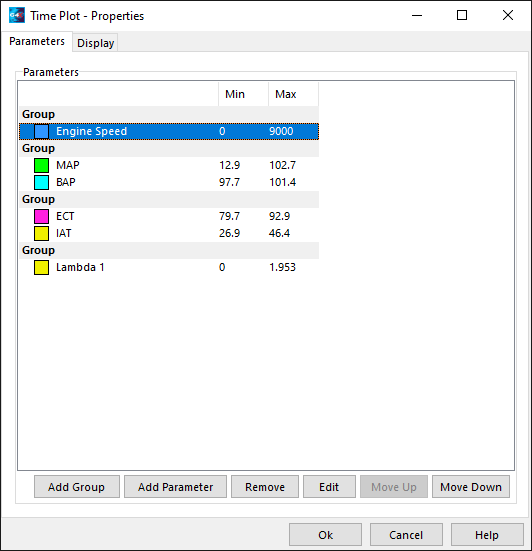
Setup Window
From this window parameters and groups can be added. Parameters can also be removed or edited. Click either 'Add Group' or 'Add Parameter', the following selection form will appear. 'Add Group' isn't available for all Views.
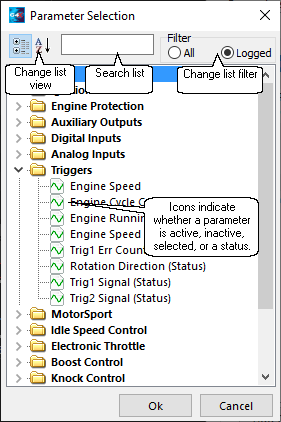
Select Parameter Window
Click or search for the required parameter. Multiple parameters can be selected using the Shift and Ctrl keys, entire categories may be selected. Click OK to add the parameter to the view. Note: When searching or viewing logged parameters, icons indicate whether a parameter has data in the current log file.
Here the user has searched 'eng', the list is displayed alphabetically, and the icons now indicate whether the parameter has data in the current log file.
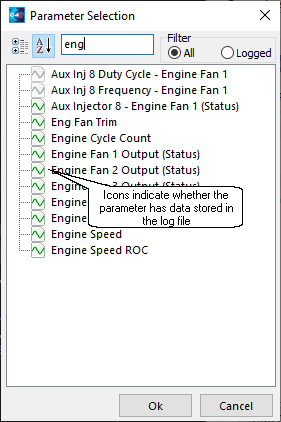
Select Parameter Window - Search
The user can also search the logged parameters for a specific parameter, here the icons will always be green.
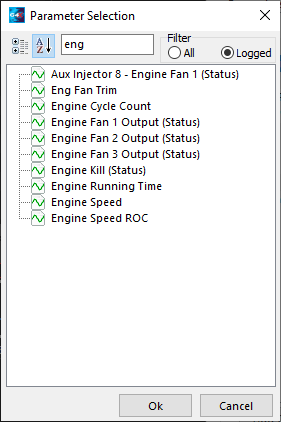
Select Parameter Window - Logged Search
The navigation window can be driven using both the keyboard and the mouse.
Zooming and Moving
The navigation window can be zoomed and moved in the horizontal direction. The current zoom and position is represented as a window drawn over the plot.
·The navigation window can be horizontally zoomed by the mouse in two ways:
·Double click where you want the start of the zoom area. Move the mouse, you will see a highlighted area - this is the new zoom area. When the desired zoom area has been selected, left click once to zoom in on the highlighted area.
·Drag the ends of the navigation window outwards to decrease the zoom, or drag the ends of the slider inwards to increase the zoom.
·The plot can be zoomed horizontally with the keyboard. To do this press 'UP' to zoom in, or press 'DOWN' to zoom out.
·The plot can be moved horizontally with the mouse. To do this click and drag the rectangle in the middle of the navigation window. Move the slider left to move the zoom back in time, or move the slider right to move forward in time.
·The navigation window can be moved horizontally with the keyboard. To do this press 'SHIFT + LEFT' to move back in time, or press 'SHIFT + RIGHT' to move forward in time.
See Also:
To change the display properties of the plot, right click and select 'Properties'. In the Properties window you will notice a 'Display' tab. Click on this to see the range of available display properties.
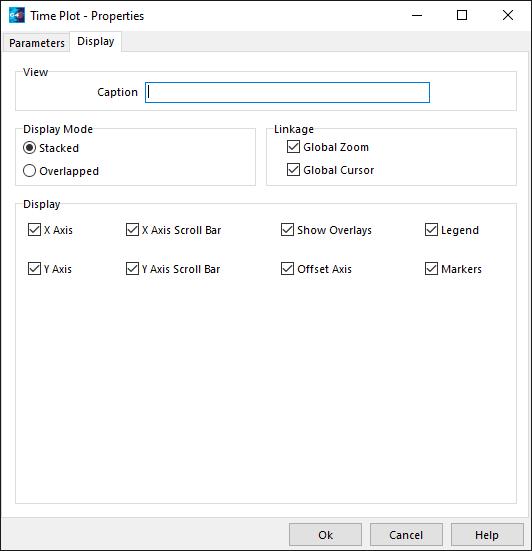
Display Options Setup
The following options exist, but are not configurable on every view type:
·Display Mode Stacked - Display mode stacked means the time plot will show a separate plot area for each group.
·Display Mode Overlapped - Display mode overlapped means that all parameters will share a plot area. The position and zoom of each group can be changed to overlap different parameters.
·Global Zoom - Enables and disables the view from sharing a common time range and zoom with other views.
·Global Cursor - Enables and disables the view from sharing a common cursor with other views.
·Y Axis Component - Shows or hides the y-axis.
·Y Axis Scroll Bar Component - Shows or hides the y-axis scroll bar.
·X Axis Component - Shows or hides the x-axis.
·X Axis Scroll Bar Component - Shows or hides the x-axis scroll bar.
·Legend - Shows or hides the parameter legend.


